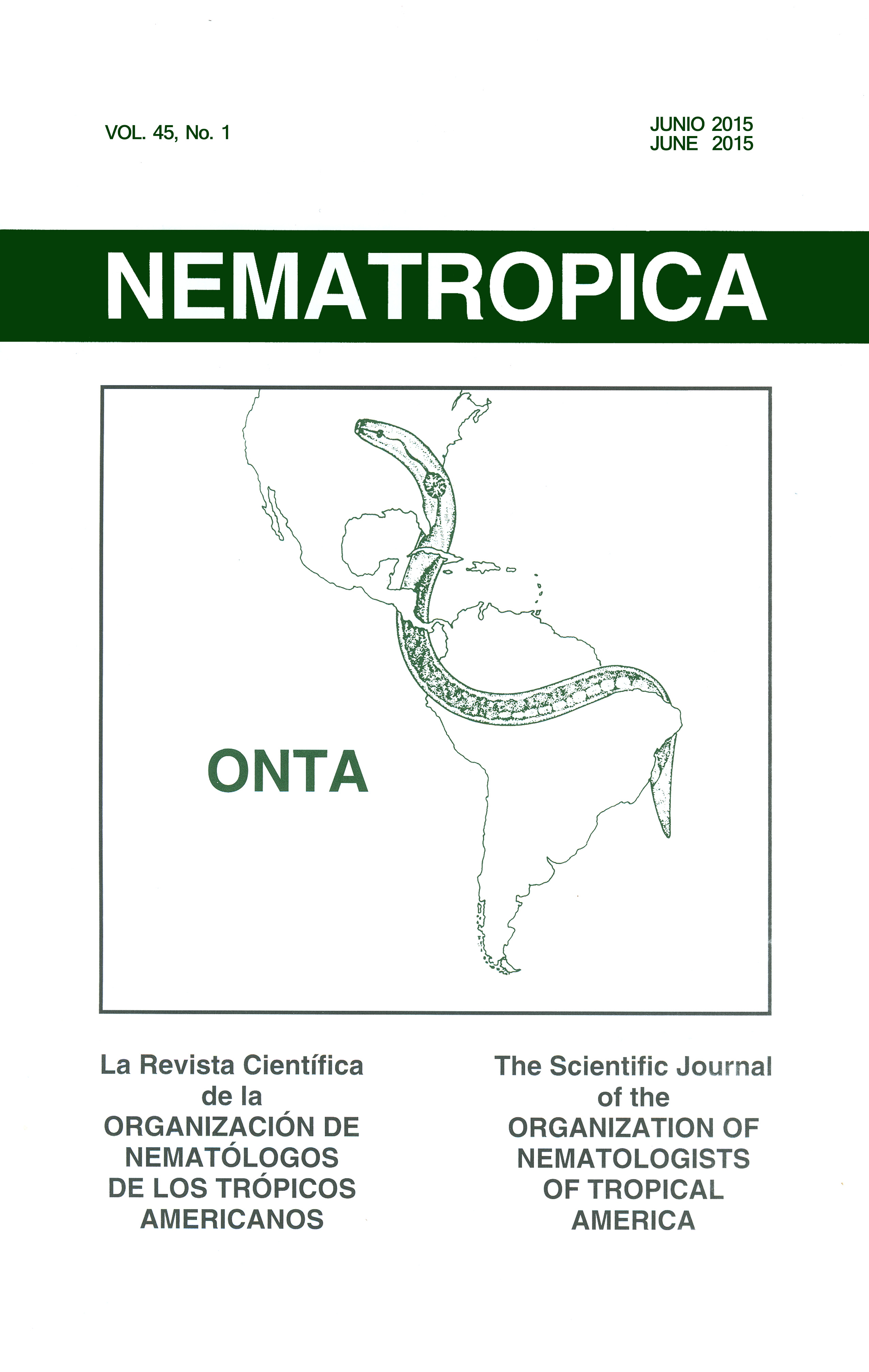EXPRESIÓN DE GENES DE DEFENSA Y ACUMULACIÓN DE CAPSIDIOL EN LA INTERACCIÓN COMPATIBLE CHILE CM334/NACOBBUS ABERRANSE INCOMPATIBLE CHILE CM334/MELOIDOGYNE INCOGNITA
Keywords:
Capsicum annuum, capsidiol, mevalonate pathway, qRT-PCR, root-knot nematodes, transcription factorAbstract
The chili pepper (Capsicum annuum) line CM334 is highly resistant to the oomycete Phytophthora capsici and three major species of root-knot nematodes (Meloidogyne arenaria, M. incognitaand M. javanica). It is susceptible to M. enterolobiiand Nacobbus aberrans. Resistance to Meloidogynespp is associated with the over-expression of genes encoding the transcription factors WRKYand WRKY2-a, and the accumulation of chlorogenic acid. With the oomycete, resistance is associated with the over-expression of several defense
genes and high accumulation of the phytoalexin capsidiol. The objective of this study was to estimate by qRT-PCR the expression levels of the defense genes EAS, HMG2, WRKY-a, PR-1and POXin the compatible interaction between CM334 and N. aberransand in the incompatible interaction between CM334 and
M. incognita, and to compare the accumulation of capsidiol in both interactions. All defense genes were over-expressed in the two interactions, but over-expression and capsidiol accumulation were higher in the incompatible (M. incognita) than compatible (N. aberrans) interaction, although over-expression differences were not always significant (P = 0.05). The increased transcript and capsidiol levels induced by M. incognita were associated with lower infection and only 0.1% of the number in the initial inoculum were found in the root at 21 d post-inoculation.

